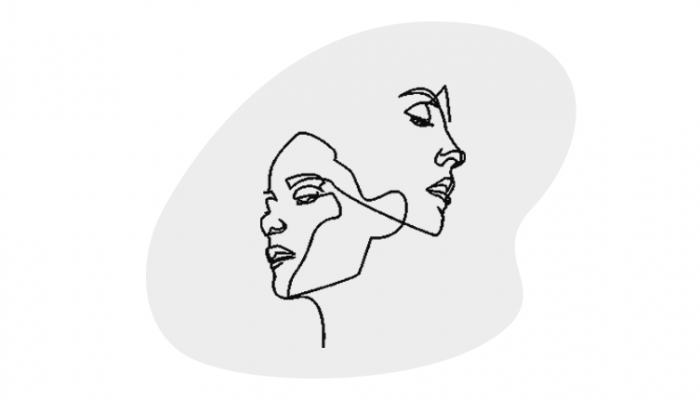London Fashion Week: Must-know ESG Trends ahead of the next event
The second of three London Fashion Weeks is swiftly approaching. The first event, on 17 February 2023, was dedicated to Vivienne Westwood — often regarded as a ‘leader’ and ‘inspiration’ for climate-conscious luxury fashion. Similarly, a selection of body-inclusive designers were chosen to represent inclusive sizes.
Sustainability and diversity have long been considered optional investments for the sake of stakeholders or company ethics. Now, the media isn’t afraid to ruthlessly expose those who refrain from such progression. Since the February event, international coverage has consistently covered which luxury brands are best representing these topics. But on the flipside, whose reputation is on the line?
Key Takeaways:
- Following the initial peak in coverage throughout London Fashion Week, coverage dropped by around 40% but remained consistent, with another incline over the past few weeks.
- When comparing coverage, sustainability has had more positive brand/designer mentions, while body positivity had more negative mentions.
- When representing sustainability and body positivity, international publications are just as interested in smaller luxury brands as established brands.
- ‘Quiet luxury’ has been the most-used trending term throughout and since the event.
From 5 February to 29 April, the Vuelio Insights team measured all national coverage across Europe and North America that discussed London Fashion Week in relation to sustainability or body diversity. Using this data, we can see where relative brands and designers fall in this conversation, what media opportunities may be available, and any potential reputational risks.
Coverage over time
Following the initial peak in coverage throughout London Fashion Week, coverage dropped by around 40%, with another incline over the past few weeks. While coverage around body diversity was lower overall, it overtook sustainability between 1-10 March and 9-22 April. Both periods were tied to a rise in the use of ‘quiet luxury’ across retail and fashion publications, a trending term used to describe a ‘lifestyle’ of high-end yet thoughtful and sustainable buying habits.
Share of voice
When comparing coverage, sustainability had more positive brand/designer mentions, while body positivity had more negative mentions. Gucci took a substantial hit when it was referred to as the opposite of quiet luxury in 32% of its international coverage in this area, alongside body-shaming claims following its LFW show, which was referred to as ‘heroin chic’ by 51 national news and trade outlets.
On the other hand, 16Arlington, Simone Rocha, and Mary Katranzou had the most positive and diverse sets of coverage tied to body positivity. 16Arlington and Simone Rocha were often mentioned together as examples of brands that promote plus-size models. Alongside them, Harris Reed was the only brand to earn national positive coverage in both sustainability and body positivity.
By an overwhelming degree, Vin + Omi’s multitude of fashion lines was extensively praised for climate-conscious ethics. The headline ‘Designers Vin + Omi on their eco-collaboration with ‘supportive’ Charles’ was syndicated 207 times across European national press, likely due to its uniquely royal recognition. Close behind was Sinead O’Dwyer, an already established voice on body positivity, who was heavily praised in news and fashion publications across Europe and North America for her decision to include models who are pregnant or using a wheelchair.
Key speakers
Felicity Hayward, a model herself, runs a movement called ‘Including the Curve’, which tracks how many plus-size models are cast in shows across different fashion weeks. For London Fashion Week, Hayward’s data, quoted by over 300 national and regional news outlets over the study period, showed that just 71 out of 2,640 models who walked last season could be considered plus-size.
Media criticism is high at other fashion weeks, too. As an established fashion critic, Vanessa Friedman’s tweet, saying she was surprised to be ‘distracted’ by the ‘extreme skinniness’ of this year’s models at New York Fashion Week, was widely quoted across 182 international news publications between February 12-26. At Milan Fashion week, designers were accused of ‘fetishising skinniness’ as it was reported that there were 77% less plus-size models than London Fashion Week.
Even I am distracted by the extreme skinniness of many of the models in Jason Wu’s show #NYFW pic.twitter.com/6HbSpxjfAa
— Vanessa Friedman (@VVFriedman) February 12, 2023
Top stories
Among the top ten most-syndicated articles, it was a 50/50 split between sustainability and body positivity. Just under half also directly referenced the designer in the headline, while quotes on ESG topics also appear to be sought after and effective for prominent coverage.
Mother of Pearl’s Creative Director Amy Powney also brought the brand’s significant international awareness to her project ‘Fashion Reimagined’, a documentary that explores the pursuit of a fully sustainable collection from ‘field to finished’ garment, and how it transformed her entire business.
What can brands do?
With terms like ‘heroin chic’ and ‘skinny fetish’ being used across international headlines, the media clearly leans in favour of brands that choose to represent curvier models and greener futures.
As these conversations are beginning to peak once again, expectations are high ahead of the next London Fashion Week event in June. Relative brands would greatly benefit from using this time to build a proactive voice on the topics, while placing some emphasis on the social media commentary of key speakers throughout. Given that the top headlines often mention specific speakers/quotes, the chance of garnering prominent coverage is particularly high — an opportunity worth focusing on for the smaller, up-and-coming luxury brands trying to stand out from the crowd.
Want to know more about this data or how media insights can support your PR and communications? Learn more here.





Leave a Comment